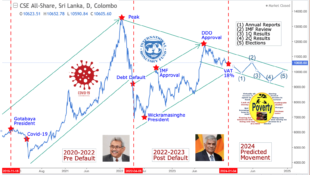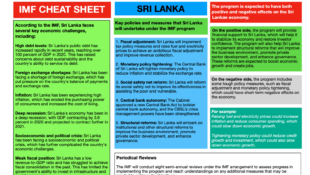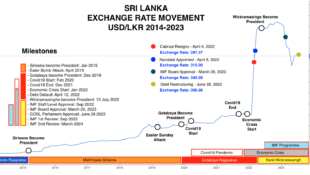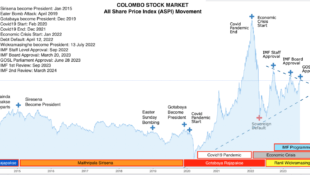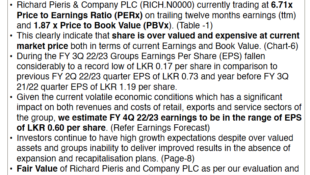Options on currencies also suggest little fear in that market. In the US, the Standard & Poor's 500 Index rose 13% last year and the average forecast among Wall Street analysts is for a 9.4% gain this year, supported by growing profits and investor willingness to pay more for each dollar of earnings. In Europe, bank balance sheets are still fragile, but the rally in share prices inspired by European Central Bank president Mario Draghi's 'whatever it takes' pledge last summer left financial companies in a far better shape to weather turmoil.
To be sure, meaningful progress has been made in escaping the abyss of systemic risk that enveloped the US in 2008 and Europe in 2011. But policymakers should avoid the trap of reading too much into this stable environment. In today's world, the meagre level of the VIX and record low yields on credit-market instruments are largely linked to the Federal Reserve's accommodative monetary policy, which is artificially damping market risk. In the wonderfully succinct words of John Burbank, the chief investment officer of Passport Management in San Francisco, 'price is a liar'.
Perhaps no price is more dishonest than that of US Treasuries, whose yields are being held down by the Fed's quantitativeeasing programme, in which the central bank buys billions of dollars in government securities each month. Recent history is rife with periods when the price of risk failed to reflect obvious financial realities. In 2000, we watched technologystock valuations reach stratospheric highs where entirely new valuation metrics were invented to justify prices. By early 2003, techstock prices had plunged more than 60%.
In January 2007, with the housing bubble at absurd proportions (home price-to-rent ratios reached levels never seen before) the VIX closed at less than 10, the lowest since December 1993. It took 18 months, but ultimately stock markets buckled and the VIX surged to 80 as credit risk and mortgage securities underwent a wrenching global repricing. Of course, most recently, the market was forced to acknowledge that it had badly mispriced the risk in European sovereign debt, leading to a three-year fire drill of summits, intervention measures and bailouts.
Policy makers should take caution from these recent periods of financial history. The important point is that the price of risk can sometimes stray from fundamentals. In the US, a yield of less than 2% on 10-year Treasuries is entirely disconnected from the fiscal challenges in plain sight and the poisonous debtceiling showdown that could be in the offing.
Treasuries are a bad deal for most investors, supported only by the easy-money policies of Fed chairman Ben Bernanke. Other asset classes look like a less-bad proposition, and the need to generate returns in such a lowyield environment could lead to disastrously unsound financial decision making. In the old days, bond-market vigilantes were around to enforce fiscal and monetary discipline. If the Fed increased the money supply too fast, bond traders were there to keep the central bank in check. When the US ran big deficits, the vigilantes either sold their holdings, or threatened to sell, raising the Treasury's costs to issue debt.
Today, it works differently. Recall that when the US was near the brink of default in 2011, the bond market rallied as stocks swooned amid the downgrade of the US's credit rating. Previously, buying or selling by the vigilantes had a counter-cyclical impact, limiting the degree to which money supply and fiscal balance sheets could expand. Today, Treasuries rally in Pavlovian fashion when uncertainty rises and investors flee from riskier assets such as stocks, commodities and other speculative holdings.
Unfortunately, this behavior serves to reinforce the mispricing of US governmentbond risk and further distort investment choices. Artificially low Treasury yields also enable the complacency of policy makers who fail to act with urgency in tackling the US debt problem. To wit, the various proposals for deficit reduction all assume that interest rates will remain exceptionally low well into the future.
This is an unwise assumption to make. As we experienced so recently with the price and availability of mortgage credit, market prices can quickly become complicit in both bubbles and busts. One must wonder if the Fed's campaign to suppress interest rates is abetting a similarly dangerous buildup of government debt at prices that are divorced from the true risk profile.
There is nothing safe about today's Treasury yields in the context of the frightening debt dynamics in the US Although the Fed seems determined to stay the course, one must wonder what might happen to riskier assets if Treasury yields jump. Absent a credible approach to dealing with the US's fiscal challenges, at some point the bond vigilantes will re-emerge.
Let's hope our policy makers heed the recent lessons from financial history and act before the market does.
http://economictimes.indiatimes.com/markets/global-markets/be-very-afraid-when-fear-disappears-from-the-markets/articleshow/18358626.cms
 would enable you to enjoy an array of other services such as Member Rankings, User Groups, Own Posts & Profile, Exclusive Research, Live Chat Box etc..
would enable you to enjoy an array of other services such as Member Rankings, User Groups, Own Posts & Profile, Exclusive Research, Live Chat Box etc.. 
 Home
Home











